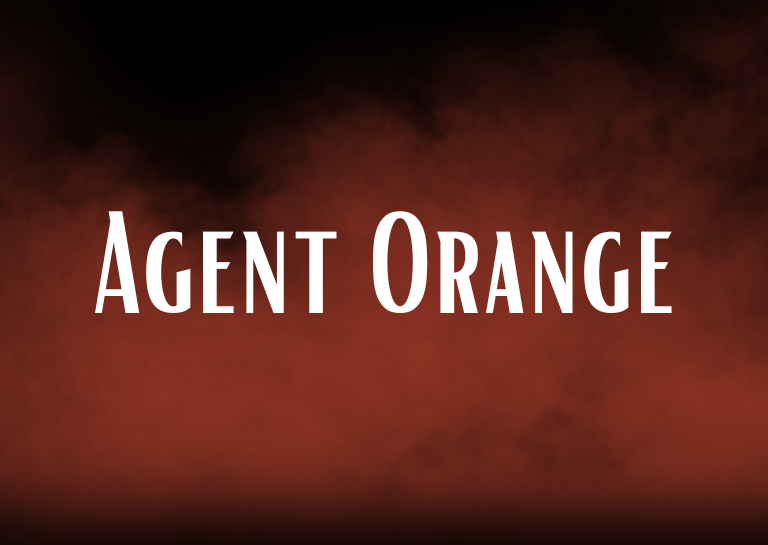
contributed by Sylvia Trein
The 2022 VA PACT Act has newly extended benefits to many Vietnam War veterans exposed to Agent Orange. Some veterans (and their families or survivors) are now eligible for PACT Act compensation thanks to its expansion of presumptive locations and conditions.
In this article, we discuss the effects of exposure to Agent Orange for both veterans and their children, as well as VA benefits available for Vietnam War diseases and disability.
What Is Agent Orange?
Agent Orange is a highly toxic herbicide that was used by the US military in the Vietnam War. During ground conflict in a densely wooded area, it was used to kill and clear foliage for better visibility as part of the Air Force’s Operation Ranch Hand. It was intended to prevent ambushes and also to destroy the Viet Cong’s food supply.
Named for the orange stripe around its container, approximately 11-13 million gallons of Agent Orange were sprayed from C-123 aircraft over 20 million acres in Vietnam, Cambodia, and Laos between 1962 and 1971. Its use ceased in 1971 when the effects of Agent Orange began to reveal themselves. Exposed military personnel fell severely ill or even died, which was linked back to contact with the herbicide. While the exact number of those affected is unknown, an estimated 3 million people living in Vietnam—military and civilian—were exposed, as well as personnel serving in other locations who handled Agent Orange or worked on the spraying aircraft.
Agent Orange contains the chemical dioxin, which is a carcinogen. Dioxin is not purposely added to Agent Orange, but occurs as a byproduct in manufacturing. As a toxic molecule, dioxin attacks the body’s immune system, vital organs, hormones, and even cells (which is what makes the harm transmissible to the next generation). Dioxin can remain in soil or riverbeds for many years and enter the food chain at dangerous levels through fish, birds, and other animals.
When it was sprayed in Operation Ranch Hand, Agent Orange was concentrated at 20 times the strength recommended by its manufacturer. An individual’s level of exposure to the herbicide determined the intensity of its damage. Those affected could have breathed it, absorbed it through the skin or eyes, or eaten food or drunk water that had been sprayed.
Effects of Agent Orange
Symptoms of Agent Orange exposure vary in severity, from acne to hand/foot numbness to muscle tremors. Some of those exposed soon experienced fatigue and shortness of breath, while others developed edema (swollen legs and feet). Symptoms and illness could surface soon after exposure or decades later.
Originally, there were 14 diseases associated associated with Agent Orange by the VA:
Later legislation, including the PACT Act, added more presumptive conditions to the list:
The VA lists these and some descriptions here.
2nd Generation Agent Orange Symptoms
Because the dioxin in Agent Orange can cause damage at the cellular level, its effects can carry through to the next generation. Beyond the increased instance of miscarriage, children of Agent Orange-exposed parents were found more likely to be diagnosed with spina bifida.
Other birth defects are considered presumptive for children of women Vietnam veterans only. The VA does not consider them “tied to herbicides, including Agent Orange, or dioxin exposure, but rather to the birth mother’s service in Vietnam.”
Vietnam Veteran Benefits in the Aftermath of Agent Orange
Despite a successful 1979 class action lawsuit on behalf of those affected, it has been a long and difficult process for Vietnam veterans to claim and access their deserved compensation and health coverage for Agent Orange diseases. For starters, the payout from the 1979 suit was only made in 1988 after many court challenges and appeals. Then, veterans who had served on ships docked at any of Vietnam’s inland waterways (or near the coast of Vietnam and Cambodia) had to fight for benefits inclusion, finally achieving this in 2019 with the Blue Water Navy Vietnam Veterans Act.
Subsequent acts in 2021 and 2022 (the latter being the most recent, the PACT Act) made some important expansions in the presumptive conditions (illnesses) that would be covered, as well as in the presumptive locations of service. Those locations now include:
The PACT Act has also made provisions for certain personnel based in Laos, Cambodia, Guam, American Samoa, or Johnston Atoll during certain date windows (viewable here).
Agent Orange Disability & Healthcare Resources
Agent Orange benefits remain one of the more underutilized veteran benefits categories, as not all veterans or their families or survivors are aware of the updated qualifications or the application process.
The VA now provides applications for veterans who have never applied and those whose conditions were not previously covered, but are now. Supplemental documentation must be submitted, including:
Applications can be completed online at the links above, or they may be sent by mail, filled out in person at a VA office, or filled out with assistance of an accredited representative (all three described here). The VA is currently taking an average of 104 days to decide on claims submitted in July of 2023.
For those veterans who do not qualify, or who have ongoing home care needs due to disability that fall outside parameters for the Agent Orange benefit, the VA’s Aid and Attendance benefit may qualify them instead. Services like VetAssist from Veterans Home Care can help you determine whether you or your loved one will be eligible to receive the benefit, which can cover some or all of the cost of home care.

© 2006-2020 Military Connection, Owned by BL, LLC. All rights reserved

 Military Influencers Use Social Media to Connect Across Experiences
Scroll to top
Military Influencers Use Social Media to Connect Across Experiences
Scroll to top
Veterans Transplant Coverage Act Will Save Lives
Soldiers Opioid Use Decreases
VA to Pay Iowa Veteran $550,000 Settlement Over Treatment